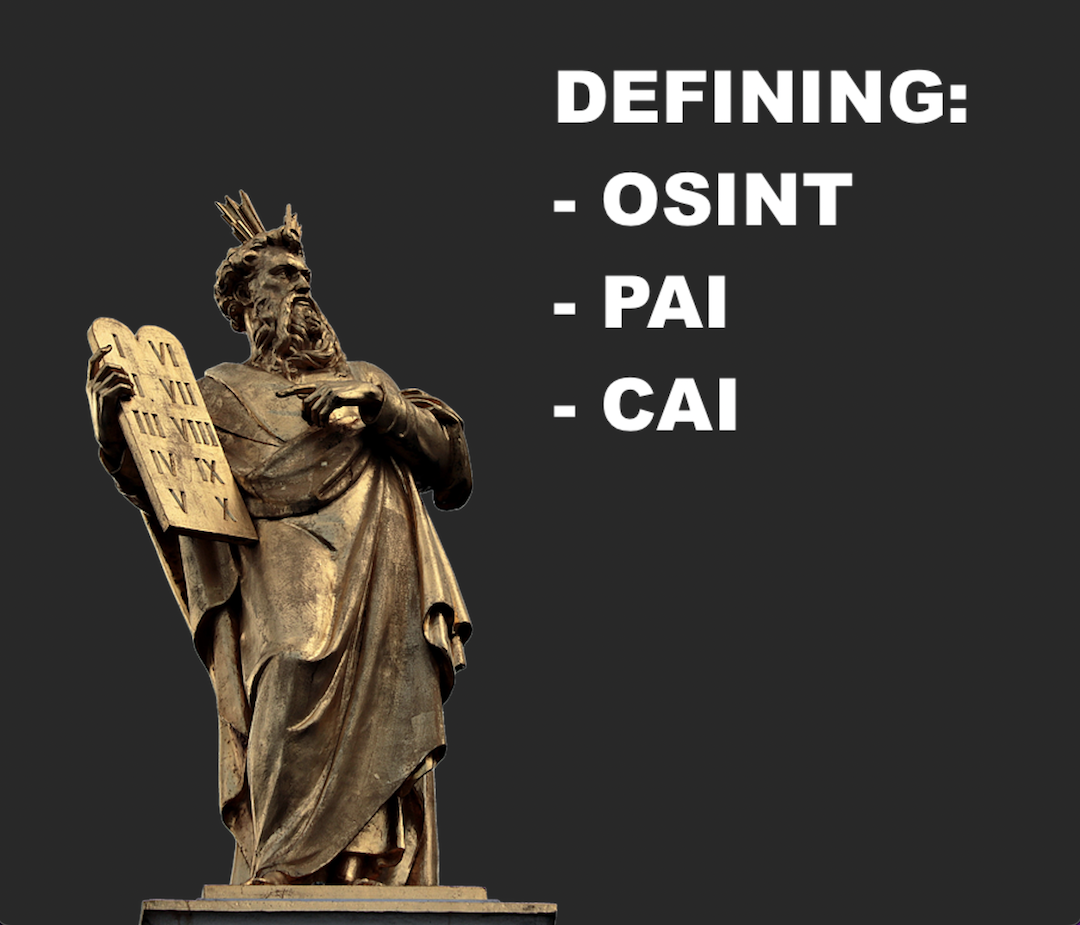OSINT Definitions Document Released
OSINT Foundation

The Criticality of Fundamental Concepts in OSINT
Today the OSINT Foundation announces the publication of our authoritative document on open-source intelligence (OSINT) definitions. This document supports our strategic goals of formalizing the OSINT discipline’s tradecraft and establishing professional certifications. It is the first deliverable of the Practitioner Committee, which defined OSINT, publicly available information (PAI), and commercially available information (CAI), and leveraging its 90 years’ collective OSINT experience to provide clarification on usage of the terms, and an explanation of the nature of OSINT. The Practitioner Committee recommended the definitions to the Foundation’s membership, adjudicated comments, and finalized the document.
OSINT DEFINITIONS DOCUMENT (pdf)
Why The Need For Definitions?
Mature intelligence disciplines such as Human Intelligence (HUMINT), Signals Intelligence (SIGINT), or Geospatial Intelligence (GEOINT) have established standards and vocabulary, tradecraft, and enterprise understanding of what is and is not included in their rubric. OSINT, on the other hand, has long suffered from confusion, especially among non-OSINT practitioners in the Intelligence Community (IC), regarding what is and is not OSINT. This is exacerbated by a widespread lack of awareness that there is, and has been, a legal definition for the discipline since 2006. Additionally, there is significant confusion with the terms PAI and CAI, with many wrongly using the two and OSINT interchangeably. These areas of confusion and inconsistency are reasons enough for promulgation of these definitions, but mispronunciation of the discipline is endemic. The Practitioner Committee provided guidance regarding pronunciation and spelling of the discipline. Just as there is no “x” in espresso, there is no “z” in OSINT.
Are You Reinventing the Wheel?
No. The Foundation’s Practitioner Committee wisely decided not to strike out on its own with new definitions, arguing that existing definitions are workable. The Foundation adopted the legal definition of OSINT as delineated in Public Law 190-163, section 931, which has stood the test of time for nearly 17 years. Existing definitions for PAI and CAI were adopted with some modifications to expand applicability and to correct for contradictory language. In this way, we sought to affirm existing government definitions while providing footnotes that highlight the problematic language in the hopes of prompting revisions by the government. The resulting document has benefited from two comment periods where the Foundation’s membership provided critical feedback which, in many instances, was incorporated into the final document.
Why Should Non-Intelligence Community OSINTers Care?
While the focus of the OSINT Foundation is the U.S. Intelligence Community, and the definitions are not binding on those outside of the Community, there is nonetheless, great value in the document for non-IC practitioners. The Foundation’s document lays out fundamental concepts based on precedent and law, while offering critical insight into the nature of the discipline to establish clear boundaries for what is and is not OSINT. These clear boundaries will help assuage concerns regarding potential violations of civil liberties and civil rights.
What’s Next?
This definitions document marks the beginning of a long-term effort to establish well-reasoned standards for the OSINT discipline, based on an inclusive and deliberative process. As we stand up the Tradecraft, Resourcing/Policy, and Certification committees and their respective subcommittees, the Foundation will develop a standards document similar to the GEOINT Essential Body of Knowledge, which was established by the United States Geospatial Intelligence Foundation. The resulting corpus will serve as the basis for an independent professional certification. We are pleased to provide these resources to the broader OSINT community at no cost and free from copyright restrictions, other than proper attribution to the OSINT Foundation. We welcome your feedback via our Contact Us page.
